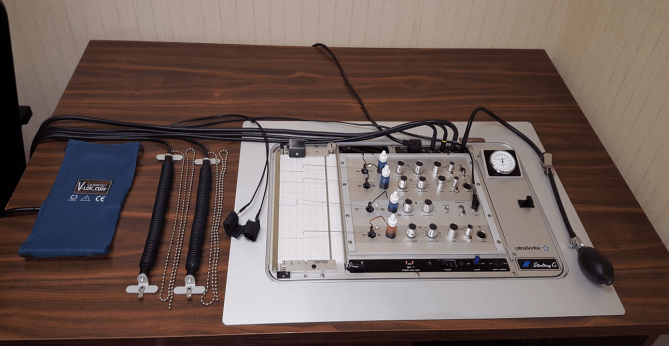What is a polygraph and how does it work?

The term "polygraph" literally means "many writings". The name refers to the manner in which selected physiological activities are simultaneously recorded. Polygraph examiners may use conventional instruments, sometimes referred to as analog instruments, or computerized polygraph instruments.
It is important to understand what a polygraph examination entails. A polygraph instrument will collect physiological data from at least three systems in the human body. Convoluted rubber tubes that are placed over the examinee's chest and abdominal area will record respiratory activity. Two small metal plates, attached to the fingers, will record sweat gland activity, and a blood pressure cuff, or similar device will record cardiovascular activity.

A typical polygraph examination will include a period referred to as a pre-test interview, a chart collection phase and a test data analysis phase. In the pre-test interview, the polygraph examiner will complete required paperwork and talk with the examinee about the test. During this period, the examiner will discuss the questions to be asked and familiarize the examinee with the testing procedure. During the chart collection phase, the examiner will administer and collect a number of polygraph charts. Following this, the examiner will analyze the charts and render an opinion as to the truthfulness of the person taking the test. The examiner, when appropriate, will offer the examinee an opportunity to explain physiological responses in relation to one or more questions asked during the test. It is important to note that a polygraph does not include the analysis of physiology associated with the voice. Instruments that claim to record voice stress are not polygraphs and have not been shown to have scientific support.

